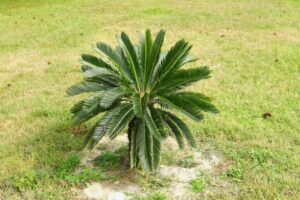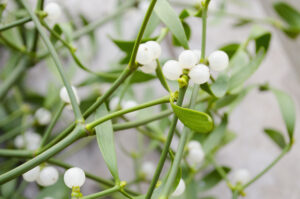What's On This Page?
ToggleI generally speak to how plants and nature can help us feel better, but there are harmful plants too.
Many are definitely NOT pet-friendly. Sometimes plants are so toxic and cause such severe symptoms they can kill a pet, and quite fast!
Flowers are quite intriguing when you think about them. They keep us alive, keep us healthy, produce oxygen, and help the bees pollinate. And round and round our planet spins! One general rule of thumb is that the plants with flowers that have the most exquisite stunning blooms are likely to be more toxic than flowering plants that have basic pretty blooms. It’s not a hard fast rule though.
While there are hundreds of plants that can be found inside our homes and outside of them that pose a threat to our pet’s health. The following are some of the most toxic plants for our fur babies.
Yes, plants bring us joy and pride as we watch them grow, both indoors and outdoors, and some of them are healthy for ingestion, life-saving even! But what about those plants or flowers that put our beloved pets in danger? How do you know if your garden or window sill is harmful to your pets?
While there are hundreds of plants that can be found inside our homes and outside of them that pose a threat to our pet’s health, I selected some of the more pertinent and common plants – ones that can have deadly serious impacts on our pets’ lives. By the way, today’s blog is about harmful plants to your pet, but I’ve also written another related article entitled 6 Holiday Plants That Make You Sick.
We love our pets dearly, so their well-being affects us as well. How can we ensure that our homes are safe for both humans and animals? It gets tricky sometimes. But if you suspect that your pet has gotten into something harmful, then consider some of the most common symptoms of ‘plant’ poisoning:
Some Symptoms in Your Pet that Indicate a Harmful Plant Exposure
Diarrhea or lack of stool production
Excessive drooling/salivation
Weakness
Changes in breathing (slowed, or rapidly racing heart)
Seizures
Hyperactivity
Kidney damage or failure
Unusual urination (or urinary incontinence)
Abdominal pain or bloating
Low appetite
Eye-watering or temporary blindness
Dry heaving
Coughing up or vomiting (either food or blood)
Swollen, red, or irritated tongue
Collapsing
Let’s talk about some of the more dangerous varieties of plants that can cause severe harm to our precious critters. The following are some of the most toxic plants for our fur babies.
1. Foxglove is a harmful (but useful) plant
This plant is absolutely stunning to look at but it is equally toxic to both dogs and cats (and horses). The vivid and bright colors of this flower might attract to you to it and you may be tempted to put this plant in your cart at the store, but if you have pets, you may want to think twice before checking out.

This plant can cause vomiting, diarrhea, weakness, cardiac arrhythmia, cardiac failure, and yes, even death. This plant is also dangerous to humans and can cause electrolyte abnormalities and negatively influence your heart as well due to the cardiac glycoside toxins it contains.
Symptoms can persist for up to about 3 days and may even require a visit to your urgent care or hospitalization in extreme cases. The prescription heart failure drug called Digoxin is made from digitalis which is extracted from a species of the foxglove plant! It has great use if it’s prescribed for a patient with cardiovascular issues.
All parts of this plant from the root to the beautiful trumpet flowers is dangerous in some way if ingested by pets (or humans). Keep an eye on your kids if you see them near this plant. This bombshell beauty is truly an absolute knockout – pun intended!
2. Azalea bushes are a harmful plant
Growing up in Florida, azaleas were everywhere. They have a beautiful and inviting blossom, however, they can be dangerous due to a neurotoxin they contain called “grayanotoxin.”
This compound keeps the brain and body in a state of excitation and will damage the heart. So abnormal heart rhythm, tremors, and low blood pressure can be one sign that our dog or cat has nibbled on the shrub. I was visiting a relative and her puppy was outside in the backyard and having a great time doing zoomies! When it came back into the house, it was experiencing various unusual symptoms of weakness, lethargy, urinary incontinence, and lack of appetite. She was somewhat unresponsive and definitely not her gleeful Beagle self!

I suspect the dog got into the azaleas or oleanders (see image below), or some other Florida plant (for example, aloe vera, philodendron, or a sago palm), because the lush garden had not been made pet-friendly yet. (They had just moved in). Florida is a haven of toxic plants and trees due to the year-round warmer weather so you have to keep an eye on your pet constantly! Fortunately, the pup fully recovered within an hour or two with rest and some fresh water. But not everyone is this fortunate. My neighbor and a dear friend shared her experience with me about her own painful situation with her pet.
Her 12-year-old dog ate some Locoweed (at least that’s what I think it got into because it grows in her backyard and it’s also growing out back near our neighborhood trail) and it experienced seizures and almost died, requiring blood transfusions from the vet! The dog was prescribed valproic acid for several weeks to control the seizures and other symptoms. It is about 90% okay now, but it has taken 3 months to recover and it is definitely not the same as it used to be. The point is that pet poisonings are pretty common and at times, serious. I know of other stories, but let’s not derail for too long. I have a few more potentially toxic plants to share with you.

3. Lillies
Lilies of all sorts are toxic to cats and dogs, but symptoms are usually worse for our feline friends. All parts of this vibrant plant are considered poisonous, even those lovely petals. If your cat drinks the water in this vase or if they get into the pollen of this flower, they might experience mild symptoms such as drooling, vomiting, changes in urination, or diarrhea.
Other more serious reactions are acute kidney failure/problems, neurological issues, tremors, seizures, depression, inability to walk or limb weakness, and even coma or death. Some cats may not display any symptoms, but you should still act with caution and contact your veterinarian as some of the more severe symptoms are irreversible if not treated quickly.

Dogs as well may experience stomach aches or other unpleasant reactions. For dogs, lilies to avoid are Rain Lily, Lily of the Valley, Peace Lily, and Cala Lily. With cats, it’s best to steer clear of:
Asiatic Lily, Easter Lily, Japanese Lily, Lily of the Valley, Flame Lily, Stargazer Lily, Tiger Lily, Daylilies, Oriental Lily, and the Casa Blanca Lily.
The Peace Lily is a widespread house plant, and it is calming to look at, but it as well poses a danger to our furry friends. Really, there are so many varieties of lilies that are toxic in some way to our pets, but especially cats, you may just want to avoid them completely or use extreme caution if you have pets and lilies under one roof. Symptoms can show immediately but be sure to keep an eye on your pet for up to 12 hours following a possible lily interaction as symptoms may onset late and can increase in severity as the hour’s pass.
4. Mistletoe is a harmful plant
Keep an eye on where you hang your holiday mistletoe. While it does offer a cozy and sentimental touch to your home this holiday season, you might want to ensure that this smooch-inspiring plant is kept out of reach of pets. This festive shrub can be toxic to dogs, especially the European variety (Viscum album), while the American variety (Phoradendron serotinum) is more toxic to cats. Symptoms for both are similar. The berries of Mistletoe contain polysaccharides, alkaloids, and lectins, which when ingested can result in drooling, vomiting, abdominal pain, and other gastrointestinal irritations.

Other symptoms, when ingested in larger amounts, are hypotension, abnormal heart rate, dyspnea (difficulty breathing), ataxia (poor muscle control, clumsy walking, and balance problems), collapse, seizures, and even death. For me, mistletoe mixed with pets is a Ho-Ho-NO… Just get a fake one and enjoy the peace of mind you’ll have until it’s time to take down the seasonal décor. And no, I promise not to judge you if you leave your lights up until February.
5. Oleander is a harmful plant
This popular garden plant is toxic to all sorts of animals, but especially to dogs, cats, rabbits, horses, goats, cattle and sheep. At high doses, oleander can have a neurological impact on mice, rats, and chickens, which is worth noting as I know these animals are also household pets (though probably not as common as the others I listed).
The most common type or oleander is the North American Oleander (Nerium oleander) followed by the second most common Thevetia peruviana (found most commonly in Central America and Mexico). Wherever you are, be sure to note if your garden or walking trails have one of these beauties and then keep your critters far away from it.
This plant contains the toxin cardiac glycoside oleandrin and researchers have noted they believe there are as many as 30 different types of cardiac glycosides which are present in any and all parts of this tree (including those that may be dried). Symptoms can show as early as an hour after ingestion and may appear as the following: drooling, vomiting, diarrhea, nausea, drowsiness, abdominal pain, dilated pupils, lethargy, and weakness.
More severe symptoms are lack of coordination, abnormal heart rate, cardiovascular dysrhythmias (heart quivers), Hyperkalemia (high potassium in the blood), collapse and death. If ingested it is advised to contact your veterinarian so they can monitor your dog on site as treatment may need to be more aggressive, depending on how much your dog ate.
Keep in mind that time is of the essence when a pet (or person) has gotten into something poisonous, so don’t second guess yourself. Better to be safe in these types of situations. Even mild symptoms can escalate if untreated and some are irreversible.

In Closing
There are dozens if not hundreds more plants, that can pose a danger to an animal, and even if they’re not in your home, they may be present on a hike, or a walk. I see pet owners tying up their pets outside of a store with a leash, without considering the big planters and pots outside of the storefront. But business owners don’t always know what plants and flowers are harmful to a dog, so it’s up to you to be smart.
The general rule is the prettier the flowers, the more dangerous it is – climbers, ivy, etc that are dangerous for cats/dogs (but those symptoms are not severe, they’re primarily puking and pooping problems).
If you think your pet has come into contact with a harmful shrub or flower, it is imperative that you contact your veterinarian immediately. If you’re not sure about a plant you have and notice that your pet is acting a little odd, you can immediately phone The American Society for the Prevention of Cruelty to Animals (ASPCA), or your local animal hospital or a veterinarian to see what they advise based on symptoms displayed by your pet.
ASPCA has a more robust article about this topic of harmless and hazardous plants (for pets) and you can learn more about them HERE. The phone number of the ASPCA Poison Control Center is 1-888-426-4435 and they are staffed 24 hours a day with toxicologists and veterinarians.
At least 25 percent of poisoned pets will recover within a few hours. Of those that require longer treatment, the odds are they will still recover within a few days with proper treatment. This holiday season I’d like to wish everyone and their beloved pets a happy and healthy holiday season!

Suzy Cohen, has been a licensed pharmacist for over 30 years and believes the best approach to chronic illness is a combination of natural medicine and conventional. She founded her own dietary supplement company specializing in custom-formulas, some of which have patents. With a special focus on functional medicine, thyroid health and drug nutrient depletion, Suzy is the author of several related books including Thyroid Healthy, Drug Muggers, Diabetes Without Drugs, and a nationally syndicated column.
